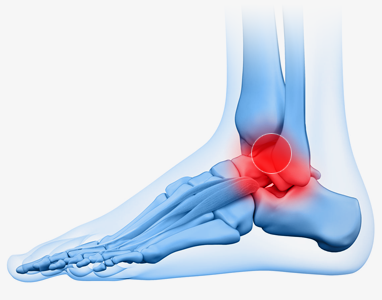Arthroereisis of Subtalar Joint in Brooklyn
 Arthroereisis of subtalar joint for flatfoot correction
Arthroereisis of subtalar joint for flatfoot correction
What exactly is arthrodesis of the subtalar joint? Subtalar Arthrodesis is a surgical procedure where a device is placed below the talus (ankle bone) with the intended function to limit excessive talar motion, as a means of treating flexible flatfoot.Flexible flatfoot is a common disorder, anatomically described as excessive pronation during weight bearing due to the displacement of the talus.
Flatfoot may be congenital in nature or may develop in adulthood due to tibial tendon dysfunction, which in turn may be caused by trauma, overuse, and inflammatory disorders, among others. Symptoms include dull, aching and throbbing, cramp type pains, which in children may be inaccurately described as “growing pains.” Additional symptoms in children include refusal to participate in athletics or walk long distances due to discomfort. Pediatric Flexible flatfoot is a common deformity for which a small, but a significant number of children and adolescents undergo corrective surgery.
Subtalar arthrodesis, in particular, limits talar motion, spares the subtalar joint and prevents excessive subtalar joint pronation. Arthroereisis is a technique for treating flexible flatfoot by means of inserting a motion-limiting device into the sinus tarsi (the space below the talus). One common misconception is that arthrodesis is a “joint-blocking” surgery. A joint-blocking procedure implies a limitation of the normal range of motion of the joint. The purpose of an arthrodesis procedure is to limit excessive motion of the joint in order to restore the joint complex back to its normal function.
Some literature about this procedure refers to the devices inserted into the sinus tarsi as “subtalar joint implant(s).” This leads someone to believe that the device actually inserts into a joint. Actually, these devices are completely extra-articular. A better term is sinus tarsi implant or stent. Currently, we will define a stent as any medical device that supports tissue in order to help prevent the abnormal closure or destruction of that tissue. For example, when a stent is inserted into the sinus of the tarsal bones, it prevents the abnormal closure of that space. The subtalar joint complex consists of two or three joints: posterior, middle and anterior joints. Sometimes the middle and anterior joints join together to form one continuous joint. In between the posterior portion of the complex and anterior portion is the area of the sinus tarsi, which has no cartilage, no interaction between two or more bones and, finally, is not a joint.
Many surgeons who see pediatric patients will consider the use of subtalar arthrodesis to correct flatfoot in children or teens. The recommendation that the procedure is performed on young patients is based on the fact that the sooner the subtalar joint complex stabilizes and the deformity is corrected, the sooner the excessive forces on the musculoskeletal tissues are eliminated. This prevents the cumulative damage inflicted on these tissues, as well as pain in the ankles, knees, and hips as a result of flatfoot, and allows growing children to walk, run, and play sports without discomfort. But this surgery benefits adult patients as well; many people of all ages who suffer from flexible talar instability can benefit from this minimally invasive, life changing procedure.
The Procedure and Recovery
Before a surgeon performs an arthrodesis of the subtalar joint, the patient is given a general or regional anesthesia to eliminate pain. An incision is made in the top of the foot, giving the surgeon access to the sinus tarsi, the space below the ankle bone. This is where the doctor will insert and fix a threaded cylinder or stent. Once the surgeon successfully places the device, the incision is closed and bandaged.
A cast or splint is then placed on the affected foot, and the patient will need to use crutches, a walker, or wheelchair to avoid weight-bearing for a period of four to six weeks while the ankle heals. Your doctor will schedule follow-up appointments to check healing, remove your cast and change bandages, and determine the best course of additional treatment, such as physical therapy.
If you would like a consultation to determine whether you are a candidate for arthrodesis of the subtalar joint, please call us at 718.395.5235 for an appointment at any of our convenient New York area locations.
